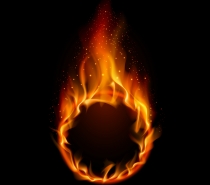
Two "Rings" Face Off

|
If Richard Wagner were alive today?
No doubt about it, he would be making movies. His idea of Gesamtkunstwerk, or “complete art work,” uniting word, music, drama, visual art, etc. has come true in the realm of cinema.
How natural, then, that James R. Cassidy, innovative, “can do,” music director of the Kentucky Symphony Orchestra, would find a link with Wagner in film-making. And not just a philosophical one. Music for films has long been where classical music “went” when audiences began abandoning contemporary art music.
J.R.R. Tolkien’s “Lord of the Rings,” published in the 1954-55, draws from the same wellspring of North European mythology as Wagner’s four-opera “Der Ring des Nibelungen” (“The Ring of the Nibelung”). Director Peter Jackson made Tolkien’s novel into the tremendously popular “Lord of the Rings” films in 2001-03. Hugely successful along with them was the musical score by Howard Shore.
The KSO, KSO
Chorale and three superlative vocal soloists joined with “Lord of the Rings”
expert Doug Adams to compare and contrast Shore and Wagner Saturday night in
Florence Baptist Church at Mt. Zion (Florence, Kentucky). Adams, a Chicago based musician and writer, author
of “Music of the Lord of the Rings Films,” provided narration for the concert,
which comprised excerpts from both composers’ music and a comparison of the two
“Ring” tales (Wagner wrote both the words and music for his four operas).
It was a giant-sized task, 15 hours of opera and 11 hours of film score condensed into 92 minutes of music, but accomplished with considerable success. What limitations there were had more to do with logistics than anything else.
The concert, which opened the KSO’s 20th anniversary season, took place in a venue ill-suited for it. The sanctuary of Florence Baptist Church, with whatever sound system was used, does not lend itself to symphony concerts. The sound was diffuse and lacked reverberation (too many soft cushions and carpeting?). Balances, perhaps variable depending on where one sat, were off (my vantage point was the third row). The 58-voice Chorale, which performed in the choir loft, could scarcely be heard, and there were serious imbalances in the orchestra, especially the strings. The first violins did not project well -- regrettably, since they are a key section and the KSO has uniformly strong players.
Adams spoke from the pulpit, behind and to the left of the orchestra, meaning that even with amplification, he was speaking over the orchestra and at some distance from the audience. Better placement would have been onstage, alongside the orchestra, where he spoke just before the final number on the concert.
That said -- plus whatever a little more rehearsal would have contributed -- the program, written by Adams, was meticulously planned and well presented. Adams' narration was pointed, intelligent and well keyed to the music (though familiarity with the two "Rings" was definitely an advantage). The 72-member KSO performed admirably, with strength in all sections, give or take a fumble or two now and then (notably by brass and percussion). Concertmistress Manami White gave just the right Celtic lift to her solo in “Concerning Hobbits,” Shore’s charming evocation of the Shire. And the trumpets, which definitely could be heard, were resplendent in such excerpts as Wagner’s “Entry of the Gods into Valhalla.”
Best of all were the singers, sopranos Kara Shay Thomson and Jennifer Cherest and tenor Ric Furman. Cherest possesses a beautiful but lighter voice, while Thomson and Furman seemed eminently capable of walking off the stage into a production of Wagner’s “Ring” at any time.
Although the “Ring” stories were told concurrently, the first half was primarily Shore's music. A comparison was drawn between the “Forging Theme” from Wagner’s “Das Rheingold” (with anvils) and Shore’s metal-heavy depiction of the industrial wasteland of Isengard. Similarly, Adams contrasted the birdsong motif from Wagner’s “Siegfried” and “Nature’s Reclamation” from Shore’s “Two Towers.” The Chorale, which sang Tolkien’s languages (Dwarves, Elves, etc.), gave vicious voice to the Orcs in their 5/4 rampage. Soprano Cherest displayed a voice of crystal clarity in excerpts from “Return of the King.”
The second half focused on Wagner. Adams contrasted the ringwraiths from “Fellowship of the Ring” with Wagner’s “Valkyries,” the latter given splendid voice by Thompson backed by Cherest in their famous “Ride.” Also heard were Wagner’s “Magic Fire Music,” “Forest Murmurs” and the battle of Siegfried and the dragon Fafner from “Siegfried.” Cherest and the Chorale lit up “The Grace of Undómiel” from “Return of the King” (Shore), which made a nice contrast with the love story of Wagner’s Siegfried and Brunnhilde. Furman, who looks, acts and sounds like a Siegfried of the future, sang Wagner’s hero with heft and beauty, yielding nothing to Thompson’s formidable Brunnhilde, and leaving one wishing to hear more from him.
The concert closed with two big excerpts from Wagner’s “Götterdämmerung,” “Siegfried’s Funeral Music” and “Immolation and Finale.”
Before the concert, Cassidy was designated a Kentucky Colonel for his two-decades of leadership of the KSO.